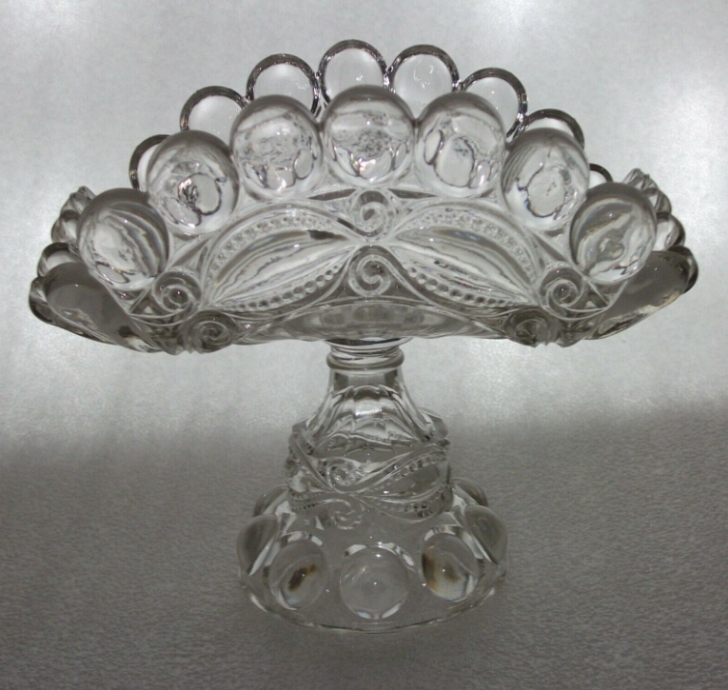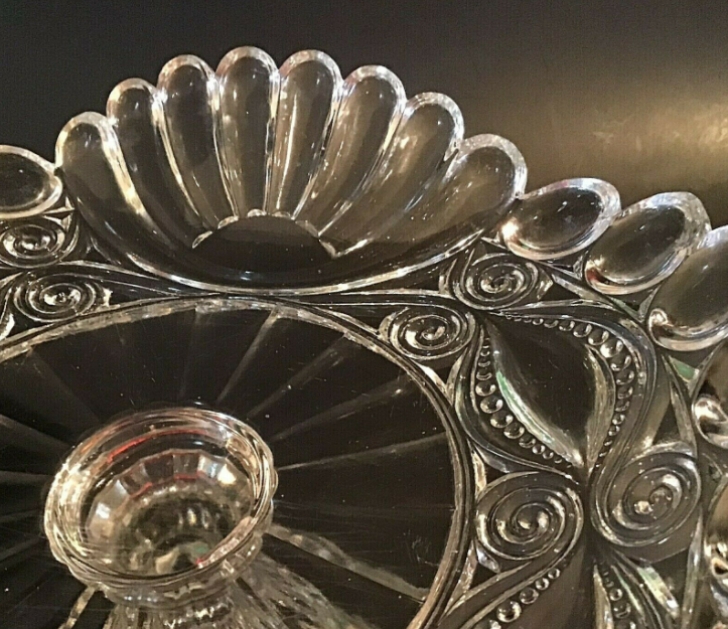One thing that I personally love about collecting American glass is there’s no end to sizes, shapes, colors, and designs on these imaginative pieces. From clear to opalescent glass, there’s something for just about everyone in these classic items. One of the more unusual motifs in this genre of collecting are eyewinker pieces, known for the shape of eyes incorporated in the glass molds. This type of pattern goes by many names, but all share key design elements. However, there are some key differences between the old styles and the newer pieces.

The first eye winker patterns were created in Ohio in 1893 by the Dalzell, Gilmore and Leighton Glass Company. Also known as the winking eye, cannon ball and crystal ball, this pattern contains round, bulbous shapes, as well as the eye-shaped ovals for a dazzling effect.
The first pieces in this pattern were tableware items such as cruets, bowls, compote dishes, and goblets. This type of Early American Pressed Glass (EAPG) was part of a growing movement that brought increasingly affordable glassware into the homes of both the wealthy and the middle class. An explosion of colors and patterns could be had at this time, though early versions of this pattern from Dalzell, Gilmore and Leighton were always clear. The official name for the pattern is Genoese, but different sellers may use one of the less formal names instead. Other glassmakers also had patterns called Genoese which looked very different, so following the visual pattern is important when searching online.

Dalzell, Gilmore and Leighton ceased production around the turn of the century and by 1901 was under the operation of the short-lived National Glass Co. It wasn’t until the 1964 that color reproductions of the famous eyewinker pattern were produced by L.G. Wright Glass Co., which made eyewinker pieces in various hues and shapes up until the 1990s.
Aside from color there are few other ways to tell if you have a new or old eyewinker. In newer pieces the beads that go around the eye shapes extend to the edges, whereas on original pieces this element fades out before reaching the corners of the eyes.

The overall pattern on older pieces will go all the way to the edge of the pieces, while on some newer items there is often a band at the top where there is no pattern at all. This design difference varies by brand and the maker known today for their eyewinker pattern is Mosser, which extends the pattern to the edge of each of their pieces.
However, the bright and vibrant colors of their glass pieces are a giveaway as to their lack of age. 20th and 21st century eyewinker pieces can be made in amber, opal, cobalt, cranberry, Vaseline, carnival, or multi-colored glass.

The prices for original Dalzell, Gilmore and Leighton Glass eyewinker glassware can vary from $20 to $120, though pieces rarely exceed this upper limit. Newer eyewinker pieces are in the same price range. Since this style has been in production on and off for the past 130 years, it’s not exactly a rare design. Larger items tend to sell for greater amounts, but many people who collect this type of glassware do so for the whimsy and fun of the designs rather than for sheer monetary investment.
SKM: below-content placeholderWhizzco for DOT

